5 Toxic Cleaners to Throw Out

When you clean your house, have you ever stopped to consider what’s in those cleaning products? Maybe it’s time you did. That’s because there are few regulations that restrict what companies put into cleaning products. In fact, they aren’t even required to list all the ingredients on the packaging.
As a result, many brand-name companies use a cocktail of chemicals that may cause harm to your health and the environment.
According to the Environmental Working Group (EWG), most store-bought cleaning products contain toxic chemicals that are known to cause skin rashes, asthma, and even cancer (1).
To keep you and your family safe, here are 5 of the most toxic types of household cleaners and how to replace them with better, greener alternatives.
1. Laundry Detergent
The thing is, your skin is like a sponge. It absorbs nearly everything it comes into contact with, including any toxic chemicals used to clean your clothes.
Furthermore, a study from 2011 found that when top-selling liquid detergents are used to launder clothes, hazardous chemicals are emitted from dryer vents when those clothes are dried (2).
The list of toxic chemicals in laundry detergent can be long thanks to toxins in fragrance, colors, and chemical stabilizers. Some even contain formaldehyde (listed as formalin), the same stuff used to preserve dead bodies!
Check to see where your brand ranks (from “A” to “F”) at the EWG laundry detergent safety ratings. If yours isn’t getting a good grade, you’ll find brands that are, including Attitude, Biokleen, Dr. Bronner’s, or Seventh Generation.
2. Air Fresheners
Brand-name air fresheners are one of the worst offenders for toxins. In 2014, Scientific American reported that scented products like air fresheners contain harmful chemicals such as benzene and formaldehyde, which can cause headaches, breathing problems and worse (3).
Air fresheners also contain chemical dispersants called phthalates. These nasty chemicals are not labeled and can cause hormonal imbalances, birth defects, and reproductive harm (4).
To freshen the air, your best bet is to get some organic essential oils and diffuse them with reeds or an essential oil diffuser. You can even choose oils to calm (lavender) or energize (peppermint) your mood.
3. Bathroom Cleaners
According to the EWG, over 80% of bathroom cleaning products contain at least one chemical that can cause significant harm to your health (5). This includes products like shower, toilet, and tile cleaners.
There are hundreds of toxic chemicals found in these cleaners that can cause skin irritation, affect the nervous system, disrupt the endocrine system (hormones) and cause reproductive harm. And since companies aren’t required to list all ingredients, the full scope of toxic exposure is unknown.
When it comes to safe bathroom cleaning products, your options are quite limited. In fact, only 12 out of 265 bathroom products (4.5%) evaluated by the EWG were classified as safe. Some of these safe brands include Attitude Sensitive Skin, Green Shield and Seventh Generation.
4. Dish Soap
Whether you like it or not, cleaning dishes is a part of daily life. Just when you seem to get them all clean, more dirty dishes magically show up.
But if you’re not careful, doing dishes can increase your toxic body burden. That’s because dish soaps can contain a range of hidden chemicals that are harmful to the body.
One common culprit is triclosan. It’s used as an antibacterial, anti-fungal, and anti-viral agent. Studies show that triclosan can disrupt your thyroid hormones (6). They are key hormones that help regulate your metabolism, body weight, muscle strength and heart rate.
Another often-used cleaning agent is SLS (sodium lauryl sulfate). Used to create a foaming effect, SLS is found in cleaners, soaps and even toothpaste. Evidence suggests SLS can irritate the skin by stripping it of its protective natural oils (7).
To protect your hands and health, turn to cleaner options such as the brands Better Life, Biokleen, Dr. Bronner’s, and Fit Organic.
5. All-Purpose Cleaners
All-purpose cleaners are the most commonly used cleaning agents within the household. You use them to clean countertops, glass, mirrors, furniture, and many other surfaces.
Unfortunately, many popular name-brand products you will find in the store are riddled with toxic chemicals including ammonium hydroxide. Ammonia is a harsh chemical that may cause respiratory damage, skin irritation, and harm to your eyes if it comes into contact with them.
Many cleaners are also full of “fragrance” a catch-all term that is used to cover a multitude of toxic chemicals that do not have to be disclosed on the label. In 2008, the International Fragrance Association released a master list of common chemicals used for fragrances (there were over 3,100).
Choose safe brands such as the ones mentioned in other categories. Alternatively, if you’re in a pinch, you can make your own all-purpose cleaner by mixing 2 cups of distilled white vinegar, 1 cup of filtered water, and around 20-30 drops of lemon essential oil.
If you’re not paying attention to what household cleaning products you’re using, you could be unknowingly poisoning your body on a daily basis. That’s because there’s little regulation on what chemicals manufacturers can use with cleaning agents.

